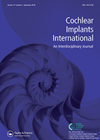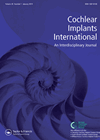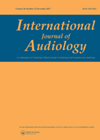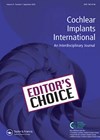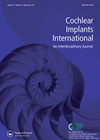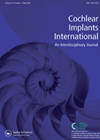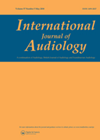
Journal Reviews
Recording of electrode voltages (REVS) to determine extra-cochlear electrodes
Determining whether electrodes are sitting within the cochlea can be difficult as the checks run by the programming software cannot always determine this. In some cases, patients may be unable to give the audiologist detailed feedback which can complicate the...
Effect of stimulation levels on speech recognition and auditory threshold performance
When programming a Cochlear® device, two measurements are normally assessed. T levels relate to the quietest sound the CI user can hear i.e. thresholds, and C levels are comfortable levels which are tolerable for the CI user. If these levels...
Cobalt hip implants and auditory-vestibular outcome
Cobalt-chromium (Co-Cr), metal-to-metal hip implants were commonly used until several side-effects were reported due to an increased level of Co and Cr metal ions in patients’ blood. Although this type of hip replacement was almost completely abandoned, there are still...
Hidden disabilities and cochlear implantation under 12 months of age
There has been a global shift to providing children with severe-profound deafness cochlear implants (CIs) before they are 12 months old. Early intervention is critical and one of the overriding factors in successful outcomes for children with CIs. Early implantation...
Quality of life in adolescence
Adolescence can be a difficult time and the added complexity of a hearing loss can exacerbate feelings during this period. In the literature, there are mixed findings that show while some children with hearing loss score poorly on some aspects...
Dead regions in patients with cochlear implants
The very nature of a dead region (DR) in a cochlea means that they are often found in patients who are eligible for cochlear implants. However, a variety of different hearing configurations are found in those with DRs because of...
X-ray vs. intraoperative testing for determining cochlear implant placement
Most cochlear implant centres confirm electrode position after surgery using X-rays to ensure optimal electrode placement. As well as transorbital view X-rays, this team check placement using impedance measures and neural response telemetry (NRT) performed intraoperatively. The former indicates whether...
How to train adults with single-sided deafness and cochlear implants
Cochlear implantation (CI) in patients with single-sided deafness (SSD) has been carried out in Perth, Australia from 2008. It poses challenges to clinicians and patients who are trying to tune in the poorer ear while still having a normally hearing...
Which cross-over frequency is best for electro-acoustic stimulation?
Advances in technology and improved soft surgical techniques have led to individuals with better hearing thresholds, especially at the low frequencies, becoming candidates for cochlear implants (CI). Surgeons are more confident that residual hearing can be preserved thus making those...
Cochlear implants and speech perception
Cochlear implants can be an effective treatment for specific hearing losses. They may often be the only way to restore hearing for profoundly deaf people. Therefore, it is very important to understand all processes that may influence effective fitting of...
Understanding osseointegration for the otologist
Bone conduction implants are hearing devices that require osseointegration to create a stable and reliable interface between the hearing device and the skull to deliver sound to the cochlea. This article reviews the physiology of osseointegration, factors that may lead...
Auditory deprivation and single-sided deafness
In cases of bilateral auditory deprivation, there is clear evidence of an inverse relationship between performance after cochlear implantation and the length of severe to profound deafness prior to implantation (i.e. the longer the deprivation the poorer the outcome on...

